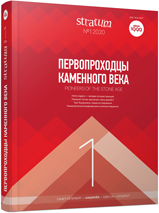Вспомогательные инструменты расщепления в каменных индустриях начальной поры верхнего палеолита (по материалам стоянки Ушбулак)
Auxiliary Knapping Tools in the Initial Upper Palaeolithic Stone Assemblages (with particular reference to the materials of the Ushbulak site)
Author(s): Vladimir M. Kharevich, Lidia V. Zotkina, Anton A. Anoikin, Zhaken K. TaimagambetovSubject(s): History, Archaeology
Published by: Издательский дом Stratum, Университет «Высшая антропологическая школа»
Keywords: South Siberia; Central Asia; Initial Upper Palaeolithic; lithic assemblage; primary reduction; preparation of external platform edge;pecking order;
Summary/Abstract: The paper is focused on the study of a specific tool type intended for pecking the external platform edge. We define the characteristic features of this technique in the Initial Upper Palaeolithic assemblages from South Siberia and Central Asia. The study was based on the assemblages from layers 6 and 7 of the Upper Palaeolithic site of Ushbulak (East Kazakhstan). For comparative purposes, we prepared a series of experimental tools which were then used for external platform edge preparation in the course of blade production. The comparative analyses of archaeological/experimental pecking tools and blades produced with the use of these tools suggest that pecking tools were short-lived expedient implements. In the assemblages of layers 6—7, the pecking technique along with direct and reverse reduction of external platform edge served as one of the main methods of fracture zone (impact area) preparation. The appearance of this technique can be explained by the adjustment of knapping technology to a number of different factors such as raw material quality, desired blank type and the character of flaking implements.
Journal: Stratum plus. Археология и культурная антропология
- Issue Year: 2020
- Issue No: 1
- Page Range: 239-256
- Page Count: 18
- Language: Russian
- Content File-PDF

